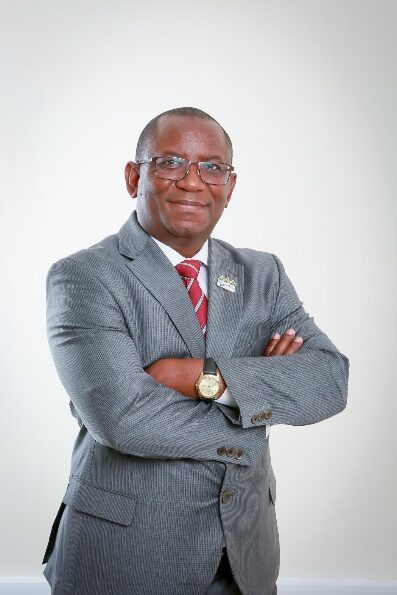
The Trans Kalahari Corridor Secretariat (TKCS) is an intergovernmental agency managing a major transport and trade route connecting the Port of Walvis Bay in Namibia through Botswana to Gauteng, South Africa. Established in 2003 by the three member countries, the TKCS aims to promote regional economic growth by simplifying and harmonizing transit procedures, ensuring the safety and security of cargo and people, and fostering regional integration. It is a key facilitator of cross-border trade, a model of regional cooperation, and works to connect Southern Africa with other markets.
Leslie Mlungisi Mpofu is the Executive Director of the Trans Kalahari Corridor Secretariat (TKCS). The TKCS is a Secretariat of the Trans Kalahari Corridor Management Committee (TKCMC), an Organisation established by the Governments of Botswana, Namibia and South Africa to coordinate the development and management of the Trans Kalahari Corridor. Mr. Mpofu boasts 29 years’ experience in the transport sector having served in various capacities at the Ministry of Transport and Communications for 17 years. He also served for 4 years as a Transport Specialist at the Southern African Customs Union (SACU).
Mr. Mpofu is a holder of a Bachelor’s Degree in Social Science (BASS) attained at the University of Botswana, a certificate in Transport Management and a Masters in Transport Management attained at the Sydney University.
We’re moving from plans to practical delivery along the Trans Kalahari Corridor. On the border side, the One Stop Border Post between Botswana and Namibia at Mamuno/Trans Kalahari is being implemented, complemented by 24-hour border operations to keep freight moving beyond daytime peaks. We’ve also introduced ID-to-ID crossing between Botswana and Namibia, which speeds up routine movement for citizens and frequent traders. In parallel, corridor member states are upgrading road infrastructure along the route—works that improve safety, reliability and the predictability that operators need to plan efficiently.
In terms of impact, we’re already seeing higher traffic volumes using the corridor, reflecting improved ease of doing business. That uplift is beginning to translate into investment in communities along the route—from logistics services and warehousing to fuel, hospitality and roadside support—creating jobs and strengthening local value chains. In short, border modernisation plus better roads are reducing friction, and that is drawing cargo onto the corridor and catalysing new enterprise around it.
First, the technology conversation: what proven tools can we deploy now to cut dwell times without adding friction for operators? I’m especially interested in public–private models that let us scale quickly and maintain the kit over its lifecycle.
Second, roadside resting stations. We need safe, serviced sites at the right intervals so drivers can comply with hours-of-service rules, reduce fatigue-related incidents and keep loads insured and on schedule.
Third, corridor performance monitoring. I’d like to align on a common KPI set and shared data.
Fourth, Spatial Development Initiatives and Special Economic Zones. The corridor should not only move goods; it should create value. I’m looking to explore how SDIs/SEZs can cluster manufacturing, agro-processing and logistics services, and what last-mile infrastructure and incentives truly unlock private investment.
Finally, the journey to a smart corridor so the TKC competes on reliability, transparency and total logistics cost.